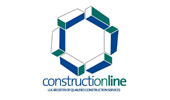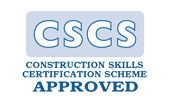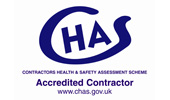Levelling Screed Minimum Thickness?
Levelling Screed Minimum Thickness
I’m Andy Parkin, Managing Director of the Multi-Award-Winning Speed Screed. I’m here today to talk about levelling screed minimum thickness.
We’re often asked, what is the minimum thickness? Firstly we have to talk about the substrate is, because different types of substrates are going to effect how thin you can lay the screed.
Construction Types
- Bonded is where the screed is directly bonded to the substrate. It could be a concrete substrate, beam and block for example.
- Unbonded has a membrane in between the substrate and the screed. The screed is not directly bonded to the substrate.
- Floating construction, this possibly includes a membrane, and insulation in between the screed and the substrate.
Each type of construction allows for a different levelling screed minimum thickness.
If we take bonded first and give you a bit of an overview of all the different types of products then hopefully that will give you some idea.
Bonded
- Sand and cement bonded would be 40 mm for a traditional one to four mix.
- Modified sand and cement screed (fast drying, rapid strength type product) you would be looking as thin as 10 mm.
- Specialist calcium sulphate flow screed would be 15 mm.
- If you are looking to lay thin floor coverings, and looking to take out the imperfections of the substrate. A smoothing compound can be laid a thin as “feather edge” 1-2mm.
A bonding agent would generally be applied to the substrate before the screed is laid. The substrate should be clean, no contamination, and sound condition. All those elements need to be considered to ensure the product will bond to the substrate. Bonding to the substrate in general increases levelling screed minimum thickness.
Unbonded
- Specialist calcium sulphate flow screed can be laid at 15 mm.
- Sand and cement (modified rapid strength gain), can be laid at 35 mm.
- Traditional screed, one to three, one to four, can be laid at 50 mm
Floating
- Calcium sulphate flow screed can be laid at 35 mm, for domestic, and 40 mm for commercial projects.
- Sand and cement modified screed for rapid strength starts at 35 mm.
- Traditional sand and cement screed is 65 mm for domestic and 75 mm for commercial.
I hope that gives you an idea of levelling screed minimum thickness. If you have any further questions, please contact us, we love to help.
Our Accreditations
About Speed Screed
Speed Screed Limited was founded on the key principle of providing first-class customer service. It has since built itself an impressive reputation for delivering high-quality projects across the United Kingdom.
The company’s success is built on its belief in quality work, attention to detail, on-time completion, strong working partnerships and the recruitment of top-level staff. about us >








